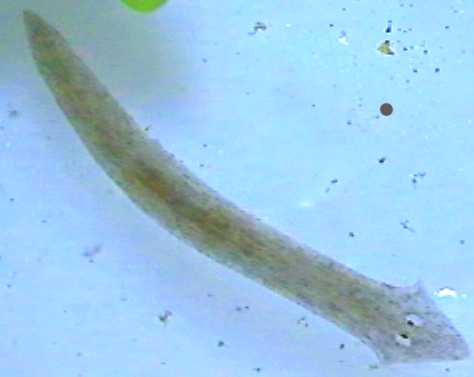Artificial intelligence has performed reverse engineering of the mechanism for the regeneration of flatworms.

Planaria surprised by progress in the field of AI / Wikipedia
For the first time, with the help of artificial intelligence , biologists have obtained a solution to the problem over which they had fought for over 100 years. They obtained a model according to which flatworms planarian grow lost body parts. This is not only the first biological model obtained by artificial intelligence, but in principle the first detailed model of this process.
To bring a person’s dream of growing new organs closer, scientists need to understand the exact mechanism of how these organs grow out of living organisms. On the one hand, the role of DNA and genetic components of organisms at the molecular level is more or less known. On the other hand, it is not clear how, on the basis of this information, the cells line up to the desired size, shape and orientation. Such research and engaged in a private university Tufts , USA.
"Most modern regeneration models are diagrams and genetic experiments that show which genes are responsible for what. Excellent - but this does not follow at all, what kind of resultant organism will take. It is not clear how to calculate what will come out of this set of genes - a tree, an octopus, or a man, ”says the professor of biology and director of the center for regeneration and evolutionary biology of Tufts, Michael Levin.
')

“Most of the models show some of the components necessary for this process, but they don’t show what influences the form and how. We need algorithms and models of building an organism that could be followed exactly and that were not incomprehensible or ambiguous. You make a prescription, and you get the desired shape. "
Levin, in collaboration with Daniel Lobo, developed a computer algorithm that, using evolutionary computing, builds genetic regulatory networks. These networks, gradually evolving, learn to predict the results of experiments that were conducted in real laboratories.
Regulatory genetic networks in cells are sets of different DNA segments that interact with each other indirectly, and are responsible for the generation of certain proteins. Scientists were looking for a regulatory network that, being executed in every cell of a virtual worm, would lead to the same results as laboratory experiments.
Studying on the results of research, the algorithm, in the end, learned to correctly predict the results of laboratory experiments and issued a model of the work of regulatory networks. As a result, Levin says, the only existing mechanistic model was obtained, which explains exactly how the genetic code turns into a living worm.
“One of the surprising discoveries was that the model found by the algorithm did not turn out to be a complicated, confusing and inaccessible person. On the contrary, this is a fairly simple model that is easy to understand, says Levin. “All this demonstrates the fact that AI can help in all areas of science - not only in processing large amounts of data, but also in finding the value of this data.”
Source: https://habr.com/ru/post/380333/
All Articles